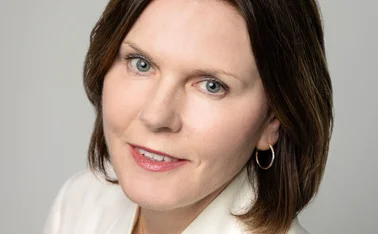
Why property insurers are struggling to control claims costs

Analysis: Sam Barrett explores how inflation, increased labour costs plus material shortages are pushing up property insurance claims costs and why working with loss adjusters to remove frictional cost is essential.
Several factors, including Brexit, the Covid-19 pandemic and, more recently, the Russia and Ukraine conflict, have resulted in price increases and labour shortages in the construction sector.
In addition, rising energy costs also fuelled price rises, whether through transportation or in the production of materials such as steel, bricks and concrete.
“The price of materials has been highly volatile over the last couple of years,” comments Andrew Slevin, director at Chartered surveyors Charterfields.
"At one point, steel was up 260% on its price pre-Covid 19 pandemic. It’s fallen back since, but it’s still 73% higher than it was.”
Labour costs have also risen sharply, as Brexit and then the Covid-19 pandemic saw the pool of construction workers shrink. “Average wages in construction have increased by 11% between the first quarter of 2020 and third quarter of 2022, with skilled labour such as electricians and plumbers slightly ahead,” Ben Blain, head of property at Verisk Claims, explains.
Even new building regulations are adding inflationary pressure, with the Building Cost Information Service flagging up recent changes that are designed to deliver Net Zero CO2 emissions by 2050. Complying with these, the service says, will add around 6% to building costs.
Claims considerations
These inflationary pressures create challenges for claims departments. Simon Parrish, head of SME underwriting at Allianz Commercial, explains: “On average, claims inflation is running into double digits. This can quickly erode the adequacy of declared sums insured, risking underinsurance.”
On average, claims inflation is running into double digits. This can quickly erode the adequacy of declared sums insured, risking underinsurance.
Simon Parrish
This is exacerbated by the increase in the claims lifecycle caused by material shortages and supply chain disruption.
Just how much longer it now takes varies between claims, but, as an example, Slevin says one client was forced to extend a 12-month building project to three years to allow for shortages.
Longer reinstatement periods also mean that all the ancillary costs escalate too. James Long, managing director of Criterion, points to a recent high-net-worth claim as an example of how this can quickly add up.
“We had one client, where the bill for alternative accommodation was £12,000 per week. When a claim takes longer, this can be a huge cost,” he says.
Trying to control claims costs isn’t easy given the scale of the increases. Rebecca Rogers, head of property claims at Allianz Commercial, says she works closely with her loss adjusters to remove as much frictional cost as possible on claims without compromising the customer outcome.
As an example, she points to the adoption of a single price on claims of less than £100,000. “Going out to tender can take approximately six to 12 weeks, which adds to costs. We also encourage brokers and customers to notify claims at the earliest opportunity – time is of the essence,” Rogers says.
Going out to tender can take six to 12 weeks. We encourage brokers and customers to notify claims at the earliest opportunity – time is of the essence.
Rebecca Rogers
Cash settlements are also becoming more common, although this isn’t always in the policyholder’s best interests, as Kajal Vakas, senior vertical market manager for claims at Lexis Nexis Risk Solutions, explains: “A cash settlement is great for an insurer, as it reduces the length of the claim, but it might not be sufficient to cover all the reinstatement costs, especially when prices are rising.”
Cover correction
Adjusting cover to these greater claims costs is a must too. Peter Blanc, group CEO at Aston Lark, says that one of the key instructions to all the firm’s brokers is to ensure that the sums insured are accurate.
“An SME with a 12-month indemnity period has no chance of getting their property reinstated in that time. They need to extend it to 24 months, at least,” he says.
For commercial policyholders, a professional valuation can be the best way to ensure adequate cover, with some insurers rewarding this by waiving average on the policy. Similarly, to ensure cover keeps pace with costs, insurers might deploy day-one uplifts or indexation.
Claims inflation also has serious ramifications for reserving and pricing, with the extent and volatility of cost increases presenting challenges to insurers.
“A policy sold today may have claims throughout 2023, and some may even settle into 2024,” explains Sam Thomas, head of retail underwriting at Zurich Insurance. “Continued inflation is a major factor when setting annual premiums.”
The uncertainty around costs also makes reserving problematic. Long says it is incredibly difficult to do this accurately.
“If a property is burned down, it can take 12 months before work even starts,” he says. “In that time, rebuilding costs can increase significantly, which makes providing figures to insurers very difficult.”
Against this backdrop, premium increases are inevitable, although insurers are taking very different approaches to the level of increase required and when it should be applied.
At one extreme, Sue Coffey, director of personal lines distribution and underwriting at Covéa Insurance, is keen to ensure that a balance is kept between premiums and claims costs, pushing through increases in line with the Building Cost Information Service (BCIS) indices.
“It does mean there are increases, but it also means that there’s no underinsurance,” Coffey adds.
Delayed reaction
Conversely, Mark Dunham, head of technical underwriting at Aviva, is confident that some of the inflationary pressures will be cancelled out by other factors.
Dunham explains: “The effect on premiums hasn’t been proportionate because it has been partially offset by the reduced frequency of certain types of claims. Changes in daily routines triggered by the Covid-19 pandemic and lockdown conditions means that theft, but also accidental damage, are less likely.”
Ratings agency Moody’s also highlights another factor that may temper the extent of any premium increases. It downgraded its outlook for the global property and casualty insurance sector from stable to negative in December 2022, reflecting high claims inflation.
Moody's believes that insurers’ efforts to push through counterbalancing price increases will be hindered by competitive pressures and weaker economic growth.
In some instances, insurers are covering increased costs in other ways. Vakas says she has seen some insurers increasing the excess on a policy to enable them to stay at the top of an aggregator’s table. “This shifts more of the claims cost to the policyholder,” she adds.
Difficult conversations
Whether premium increases are pushed through now, or insurers hold out for more buoyant times, having to tell a client that the cost of cover has increased is not an easy conversation. Any increase can often be magnified where a greater sum insured or indemnity period is required as well.
Given these factors, Blanc says it’s not uncommon for clients to see a premium increase of around 18%.
“It can be a challenging conversation,” he says. “Where it forces a rebroking exercise, it can be frustrating when the incumbent insurer then comes down to match the market. This makes the insurance market look bad, so we will always have the conversation with the insurer at outset to see what its walkaway price is. This saves the reputational damage.”
Customer reaction and cancellation fears
Financial pressures on consumers and businesses, coupled with rising premiums, means there are worries about how policyholders will react to rising insurance costs.
The Financial Conduct Authority voiced its concerns in September 2022 when it wrote to insurers warning that pressures on household budgets may lead to some customers cutting back on the insurance they need.
I would expect to see policyholders reducing or cancelling their cover, especially contents insurance, as it’s not mandatory. I think it’s still too early: we’re only at the very beginning of the financial squeeze, but it will come.
Sue Coffey
Coffey is anticipating this type of behaviour. “I would expect to see policyholders reducing or cancelling their cover, especially contents insurance, as it’s not mandatory,” she says. “I think it’s still too early: we’re only at the very beginning of the financial squeeze, but it will come.”
She also believes that some of this behaviour is being masked by recent product development, with tiered products allowing policyholders to reduce their cover levels. While this means they are still covered, the sum insured may not adequately reflect their needs.
It may be too soon for the FCA’s cancellation fears to materialise, but insurers are already seeing changes in policyholder behaviour.
Zurich saw the number of fraudulent property claims insurance by 25% between 1 January and 31 May 2022, compared with the same period in 2021.
Another unwanted side-effect of the current financial squeeze is an increase in customer complaints. Coffey say these have risen in the last few months, especially ones that come with a request for financial compensation. “An unhappy customer increases claims costs. There are tricky times ahead,” she adds.
Commercial property cover gaps
More than 40% of commercial properties are underinsured as a result of rising inflation, according to research by Gallagher among business owners and claims managers.
The research also found that:
- 43% of commercial property owners who have repaired or rebuilt their premises in the past 12 months were underinsured.
- Businesses that have not reviewed their insurance could be liable for an average of 43% of the value of repairs or rebuilds due to underinsurance.
- 65% of business owners have not reviewed their commercial property insurance during the past year, with 16% not reviewing it in the past five years.
- Commercial property repairs are taking 33% longer than a year ago, according to claims managers.
- 80% of claims managers say many businesses have too short an indemnity period on their business interruption cover.
The insurer response
The challenges associated with this high-inflation environment mean that insurers are adapting their claims operations. Robust communications are a must.
“Delays due to labour shortages or parts availability can be understandably frustrating for customers. It’s really important for insurers to be as proactive as possible in settlement practices and communications with policyholders,” says Thomas.
Technology is also helping to speed up the settlement process. As an example, deploying drones can ensure that losses are assessed and verified promptly.
“Speed is so important in settling claims,” says Vakas. “The faster this happens the more insurers can contain costs.”
As well as fast-tracking valid claims, technology can also help with fraud identification. Alongside more collaboration through the Insurance Fraud Bureau and the Insurance Fraud Enforcement Department, David Robinson, retail pricing director at Axa UK, says insurers are fine-tuning their internal processes.
“We’re being more agile and making use of advanced analytics and emerging technology, such as machine learning, to help prevent and respond to fraud risks,” Robinson explains.
Policyholder education
Policyholder education is recognised as essential too, especially after so many years when inflation was low.
“The education piece is important, but we also need to be a responsible industry and help people get the right cover at the right price,” says Coffey. “This includes working with suppliers to keep claims costs down, but also applying the correct rate.”
More work is expected around claims prevention, helping to avoid difficult conversations about delays and underinsurance altogether. This includes education around risk management, for example using leakbots in commercial properties to minimise the escape of water damage, but also ensuring policyholders understand the importance of notifying their insurer of any claim quickly.
Education is also likely to cover the need to have the right sum insured, advocating professional valuations for larger and commercial risks.
“Customers need to make sure the values they are insuring for are adequate,” says Dunham. “We are also aware of our responsibilities to ensure our products are priced fairly and responsibly. We have steps in place to help customers facing financial hardship, including payment deferrals and flexible excess payment options.”
Inflation outlook
Looking ahead, there are signs that some of the inflationary pressures will start to ease off.
“I believe we’re at the peak, and material costs and indexation will start to drop in 2023,” says Coffey.
Forecasts from BCIS support this (see box). After two years of double-digit growth in its General Building Cost Index, this is expected to fall back to 3% in the year to November 2023, with its Materials Cost Index flatlining over the next 12 months.
While this will take some of the pressure off, it’s far from a return to the heady, pre-Brexit days. “There are no signs of costs going back to their original position. Even if the increases drop back next year, prices are still going up,” says Slevin.
Against that backdrop, and with the recession and the cost-of-living crisis taking a grip, it will be essential that the insurance sector helps policyholders to ensure they are adequately protected.
Only users who have a paid subscription or are part of a corporate subscription are able to print or copy content.
To access these options, along with all other subscription benefits, please contact info@postonline.co.uk or view our subscription options here: http://subscriptions.postonline.co.uk/subscribe
You are currently unable to print this content. Please contact info@postonline.co.uk to find out more.
You are currently unable to copy this content. Please contact info@postonline.co.uk to find out more.
Copyright Infopro Digital Limited. All rights reserved.
You may share this content using our article tools. Printing this content is for the sole use of the Authorised User (named subscriber), as outlined in our terms and conditions - https://www.infopro-insight.com/terms-conditions/insight-subscriptions/
If you would like to purchase additional rights please email info@postonline.co.uk
Copyright Infopro Digital Limited. All rights reserved.
You may share this content using our article tools. Copying this content is for the sole use of the Authorised User (named subscriber), as outlined in our terms and conditions - https://www.infopro-insight.com/terms-conditions/insight-subscriptions/
If you would like to purchase additional rights please email info@postonline.co.uk








